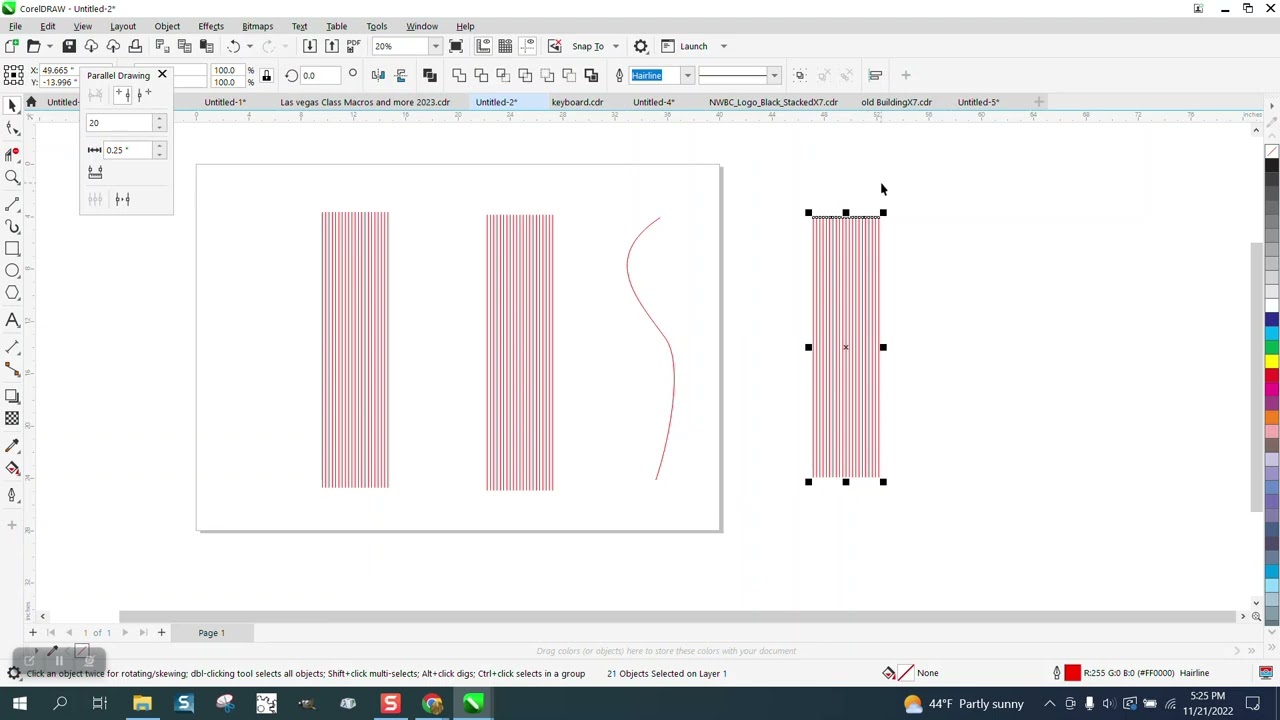
Introduction:
CorelDRAW, a robust vector graphics editor, provides designers, illustrators, and artists with a versatile toolkit to unleash their creativity. Among the fundamental skills in digital design is the ability to add parallel lines to an existing line. This skill enhances the precision, intricacy, and visual appeal of your digital artwork. In this extensive guide, we will delve into various techniques, customization options, and advanced tips to empower you in seamlessly adding parallel lines to an existing line in CorelDRAW. Whether you are creating intricate patterns, architectural drawings, or graphic illustrations, mastering this technique opens up a realm of possibilities within the dynamic world of CorelDRAW.
Understanding the Basics of Adding Parallel Lines:
Adding parallel lines to an existing line involves creating lines that maintain a consistent distance from the original line. This technique is particularly useful for creating intricate patterns, emphasizing specific design elements, or enhancing the visual complexity of your artwork. CorelDRAW offers a variety of tools and methods to achieve this, allowing you to customize the distance, appearance, and arrangement of parallel lines.
Basic Techniques for Adding Parallel Lines:
- Duplicate and Adjust: One straightforward method is to duplicate the existing line and adjust the position of the duplicate to create a parallel effect. Copy the line (Ctrl + C), paste it (Ctrl + V), and use the transformation handles to move the duplicate to the desired location.
- Using the Parallel Line Tool: CorelDRAW features a dedicated Parallel Line Tool that simplifies the process. Activate the tool from the toolbar, click on the existing line, and drag to create parallel lines at a specified distance. This method is efficient for quickly adding parallel lines with consistent spacing.
- Combining the Artistic Media Tool: Utilize the Artistic Media tool to create parallel line patterns. Select a parallel line pattern from the Artistic Media docker, drag it along the existing line, and adjust its length and position. This approach is excellent for creating dynamic and intricate designs.
- Creating Custom Patterns: Experiment with the Pattern Fill tool to create custom patterns with parallel lines. Draw a small segment of the parallel lines, convert it into a pattern, and apply it along the existing line using the Fill tool.
Advanced Techniques for Adding Parallel Lines:
- Creating Dynamic Symmetry: Combine the PowerClip and Blend tools to create dynamic symmetry with parallel lines. PowerClip the original line into a shape, duplicate it, and use the Blend tool to interpolate between the two shapes, generating a series of parallel lines.
- Mesh Fill for Complex Patterns: For intricate and complex patterns, consider using the Mesh Fill tool. Apply a mesh fill to the area defined by the existing line, manipulate the control points, and introduce parallel lines with varying thickness and curvature.
Customization Options for Precision:
- Adjusting Line Properties: Tailor the appearance of your parallel lines by adjusting line properties. Access the ‘Outline’ or ‘Pen’ settings in the ‘Object Properties’ docker to modify line thickness, color, and style for both the existing line and the parallel lines.
- Fine-Tuning with the Shape Tool: After adding parallel lines, use the Shape tool to fine-tune their positions. Click and drag individual nodes or segments to achieve pixel-perfect adjustments. This level of granular control ensures precision in your design.
- Snapping Options for Alignment: Utilize snapping options to ensure accurate alignment of parallel lines. Enable ‘Snap to Grid,’ ‘Snap to Guidelines,’ or ‘Snap to Objects’ to facilitate precise placement and maintain consistency.
Troubleshooting and Optimization Strategies:
- Avoiding Overlapping Lines: Exercise caution to prevent overlapping lines, which can create visual clutter. Utilize guidelines and snapping options to maintain a clean and organized composition.
- Grid Usage for Alignment: Enable the grid and adjust its properties to align parallel lines systematically. The grid provides a structured reference for maintaining consistency in your design.
- Node Editing for Precision: For intricate designs, leverage the Node Edit tool to have granular control over individual nodes. This is particularly useful for adjusting the positions of anchor points in parallel lines with high precision.
Conclusion:
Adding parallel lines to an existing line in CorelDRAW is a fundamental skill that enhances the precision and visual appeal of your digital designs. By exploring the various techniques, customization options, and advanced tips presented in this comprehensive guide, you’ll gain the confidence to create intricate patterns, dynamic symmetries, and visually stunning illustrations. Whether you’re crafting architectural drawings, textile patterns, or graphic illustrations, CorelDRAW empowers you to design with precision and finesse. Embrace the versatility of adding parallel lines, and let your creativity flourish on the digital canvas within the dynamic world of CorelDRAW.